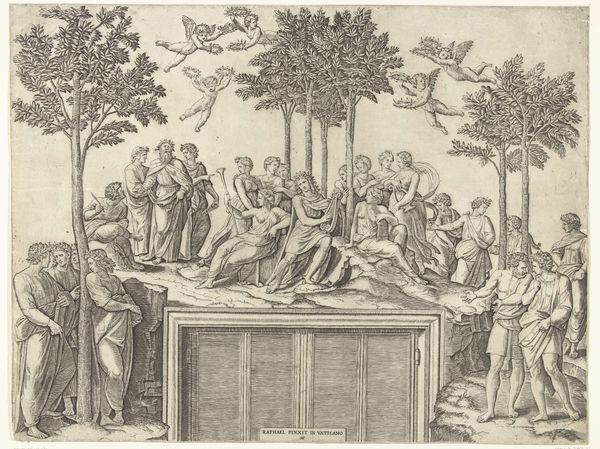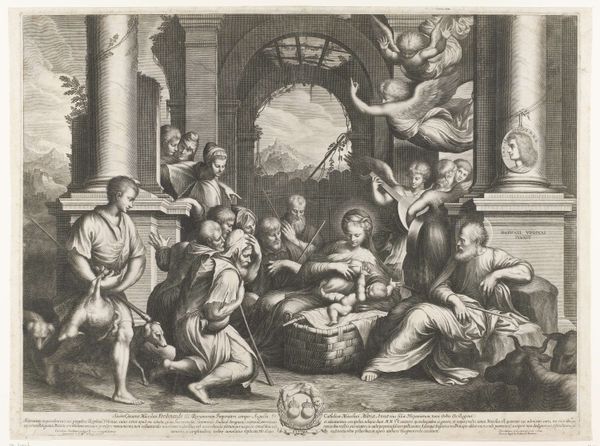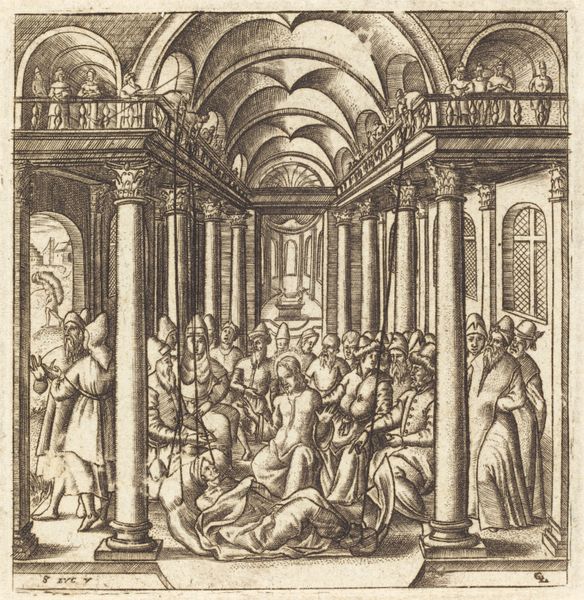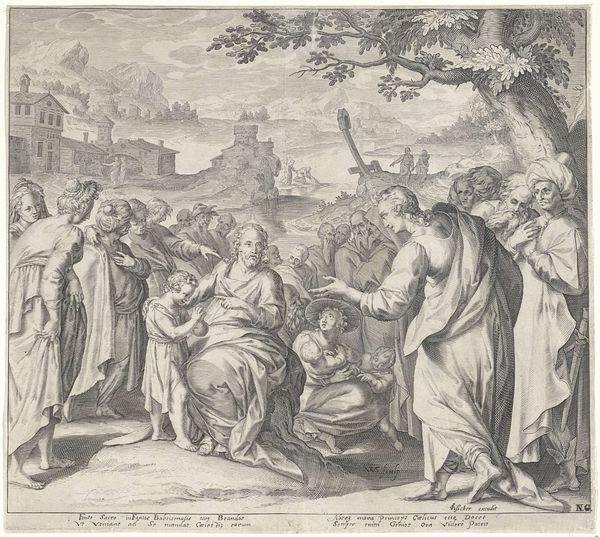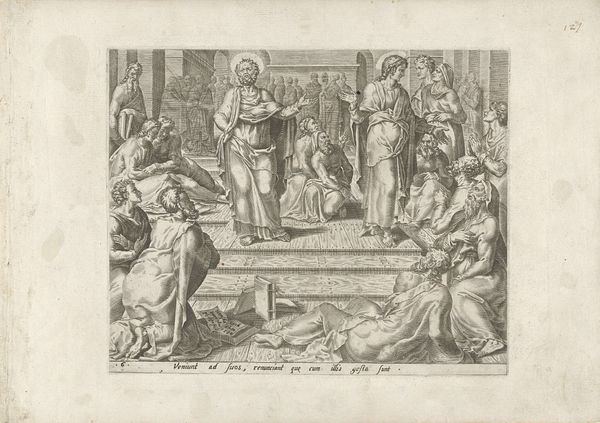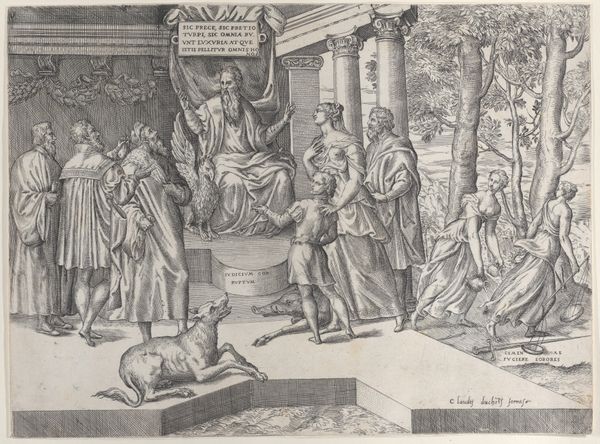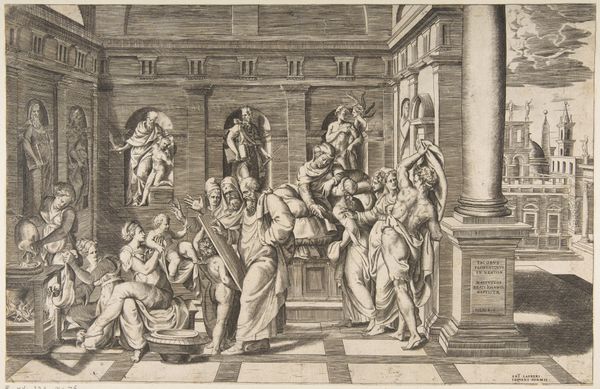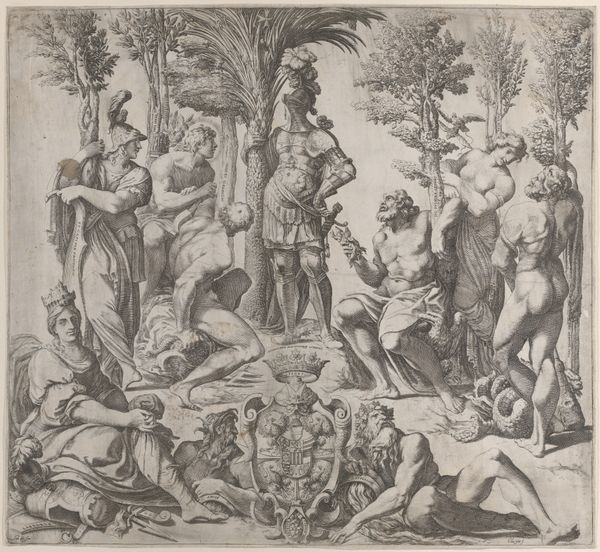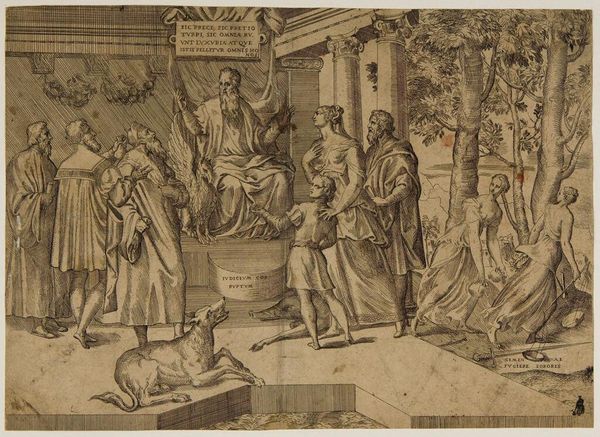
print, engraving
#
narrative-art
# print
#
mannerism
#
figuration
#
group-portraits
#
history-painting
#
engraving
Dimensions: height 420 mm, width 689 mm
Copyright: Rijks Museum: Open Domain
Curator: Before us, we have Jacob Matham's "Apollo on Parnassus," created between 1594 and 1598. Editor: It's striking! A very busy composition; the density of the figures gives it almost a woven texture. The stark monochrome pulls you in too; I’m curious about the material process involved. Curator: It's an engraving. Matham masterfully uses line to define form and create shading. The print depicts Apollo, surrounded by the Muses, atop Mount Parnassus. It invites discourse around patronage, classical learning, and the construction of cultural authority. The way these bodies interact is so curious, no? Editor: Indeed. As an engraving, its production relies heavily on skilled labor and printmaking practices of the era. The matrix, tools, inks... Understanding how these materials shape the artwork, its circulation, and accessibility is vital. Consider also its social context – the economics surrounding artistic production, who commissioned it, and for what purpose. Curator: Exactly! This print serves as a reminder that artistic creation isn't divorced from its socioeconomic and historical landscape. We also must acknowledge its complicated lineage; these are visual traditions shaped by power structures. I also note a theatrical quality. A literal stage. Editor: The "stage" is a visual anchor to its labor. Engravings at this time existed for commerce; their mode of production demanded skilled artisans reproducing images for a broader market. How were these craftsmen compensated? What were the working conditions? Considering labor is so essential in an economy that existed within constrained and specific boundaries for many persons in these production spheres. Curator: Precisely. Furthermore, it also reminds me how visual culture of the 16th-century helped to enforce hierarchies through a male, Western gaze that excluded, or appropriated. The material reality is bound to that historical context of marginalisation. Editor: By exploring those themes around labor and commerce together we acknowledge Matham’s craftsmanship while still reflecting how he created something for profit but hopefully also for people’s consideration. Curator: By examining these things it compels one to engage with the work's complicated identity in ways I believe promotes dialogue, criticism, and ultimately, hopefully, creates meaningful interaction with art today.
Comments
No comments
Be the first to comment and join the conversation on the ultimate creative platform.
